#orcrist
Text
#swords#named swords#sting#anduril#glamdring#orcrist#gurthang#tolkien#jrr tolkien#tolkien tumblr#tolkien legendarium#lord of the rings#lotr#silmarillion#the silm#the silmarillion#the hobbit#fantasy#lotr poll#tolkien polls#this is a great poll#tumblr polls
102 notes
·
View notes
Text
Decided to watch some of the production videos again and nothing gets me quite like seeing Richard Armitage zoning out while dressed as Thorin wrapped in spiderwebs and using Orcrist as a guitar
#richard armitage#the hobbit thorin#thorins company#thorin oakenshield#the hobbit#desolation of smaug#lotr#orcrist#lord of the rings#hobbit#thorin company#thorin#smaug#smaug the dragon#mirkwood
60 notes
·
View notes
Text
The Others: Ringil, Dagmor, Glamdring, Orcrist, Sting
Swords of the First Age, Part 3 of 3
[This is a continuation of the response to this ask]
Ringil
Meaning: From ringe- “cold”. Quenya. (Eldamo).
Maker: Unknown
Owned/wielded by: Fingolfin
Notable for: wounding Morgoth seven times and hewing his foot.
Fate: Unknown.
But Fingolfin gleamed beneath it as a star; for his mail was overlaid with silver, and his blue shield was set with crystals; and he drew his sword Ringil, that glittered like ice.
The Silmarillion, ‘Of the Ruin of Beleriand and the Fall of Fingolfin’
Discussion
We don’t know a lot about Ringil besides its epic, climactic moment. Who made it? Was it brought from Valinor or made in Beleriand? Did it somehow survive Fingolfin’s fall? Lots of room for the imagination to roam.
Dagmor
Meaning: Uncertain. Possibly “Slayer of Darkness”, combining dag- “slay” and môr “darkness”. Sindarin. (Eldamo).
Maker: Unknown
Owned/wielded by: Beren
Fate: Unknown
Danger he sought and death pursued,
and thus escaped the doom he wooed,
and deeds of breathless daring wrought
alone, of which the rumour brought
new hope to many a broken man.
They whispered 'Beren,' and began
in secret swords to whet, and soft
by shrouded hearths at evening oft
songs they would sing of Beren's bow,
of Dagmor his sword…
Lay of Leithian Recommenced, 503-12
This is the only mention of Beren’s sword’s name.
From the Trolls' Lair
There were lots of clothes, too, hanging on the walls—too small for trolls, I am afraid they belonged to victims—and among them were several swords of various makes, shapes, and sizes. Two caught their eyes particularly, because of their beautiful scabbards and jewelled hilts. Gandalf and Thorin each took one of these; and Bilbo took a knife in a leather sheath. It would have made only a tiny pocket-knife for a troll, but it was as good as a short sword for the hobbit.
The Hobbit, Chapter 2: Roast Mutton
Elrond knew all about runes of every kind. That day he looked at the swords they had brought from the trolls' lair, and he said: ‘These are not troll make. They are old swords, very old swords of the High Elves of the West, my kin. They were made in Gondolin for the Goblin wars. They must have come from a dragon's hoard or goblin plunder, for dragons and goblins destroyed that city many ages ago. This, Thorin, the runes name Orcrist, the Goblin cleaver in the ancient tongue of Gondolin; it was a famous blade. This, Gandalf, was Glamdring, Foehammer that the king of Gondolin once wore.
The Hobbit, Chapter 3: A Short Rest
Glamdring
Meaning: Foehammer. Sindarin. Called Beater by the goblins.
Maker: Elves of Gondolin
Notable for: slaying the Great Goblin.
Owned/wielded by: Turgon, Gandalf
Fate: Unknown
Discussion
Glamdring is a significant First Age weapon for having been the sword of Turgon, though no mention of it is made in the “Silmarillion” legends, as with the other “Troll’s lair” blades. (Tolkien never returned to edit or rewrite the narrative version of the story of the fall of Gondolin — other than the unfinished ‘Of Tuor and his Coming to Gondolin’, which ends with Tuor’s arrival to the Hidden City — after the publication of The Hobbit; he may have intended to incorporate Glamdring and Orcrist into the legends and never got around to it.)
As the only weapon known to have been in Gandalf’s possession in his last standoff with Dúrin’s Bane, Glamdring may have dealt the death blow to the Balrog. It is not known whether Gandalf took Glamdring to the Undying Lands when he departed or left it in Middle-earth.
Orcrist
Meaning: Goblin Cleaver. Sindarin. Called Biter by the goblins.
Maker: Elves of Gondolin
Owned by: Unknown; Thorin Oakenshield (taken from him in Mirkwood)
Fate: Placed by Thranduil on Thorin’s tomb.
It had killed hundreds of goblins in its time, when the fair elves of Gondolin hunted them in the hills or did battle before their walls. They had called it Orcrist, Goblin-cleaver, but thegoblins called it simply Biter. They hated it and hated worse any one that carried it.
The Hobbit, Chapter 4: Over Hill and Under Hill
Upon his tomb the Elvenking then laid Orcrist, the elvish sword that had been taken from Thorin in captivity. It is said in songs that it gleamed ever in the dark if foes approached, and the fortress of the dwarves could not be taken by surprise.
The Hobbit, Chapter 18: The Return Journey
Discussion
Though Elrond says Orcrist was a “famous blade” he does not say to whom it belonged. As Gondolin had no shortage of great warriors and other nobles, there is ample opportunity for the imagination to run wild.
Sting (dagger)
Meaning: Any previous name unknown; named by Bilbo after he killed a spider of Mirkwood.
Maker: Presumably also Elves of Gondolin.
Owned by: Unknown; Bilbo Baggins, Frodo Baggins, Samwise Gamgee
Notable for: slaying Shelob.
Fate: Unknown.
Somehow the killing of the giant spider, all alone by himself in the dark without the help of the wizard or the dwarves or of anyone else, made a great difference to Mr. Baggins. He felt a different person, and much fiercer and bolder in spite of an empty stomach, as he wiped his sword on the grass and put it back into its sheath. “I will give you a name,” he said to it, “and I shall call you Sting.”
The Hobbit, Chapter 8: Flies and Spider
Discussion
Sting, as a dagger, may not have been an especially significant weapon in the First Age, though of course one can always imagine tales for it involving well-known canonical characters! As with Glamdring, we do not know whether Sam took it with him when he sailed or not.
Finally: Elrond surmises that the “Troll’s lair” weapons survived through multiple plunderings over the Ages — but it’s not a sure thing. There’s room to invent other histories for these blades.
Tangent: Glowing Blue
The ability to glow blue in the presence of Orcs seems to have been a feature unique to these three Gondolin-forged blades. Whether or not other Elven weapons had this ability is unknown, though it’s not implausible that they would possess this or other “magical” properties. For those who enjoy coming up with explanations, the “science” behind the blue glow is also left to the imagination.
Research
Note that these websites contain some inaccuracies and incomplete citations and were used to help with finding quotations.
The Tolkien Forum: Weapons
Wikipedia: List of weapons and armour in Middle-earth
Elven Swords by Iain Norman (This one is an interesting and well-researched essay comparing the sword designs in the Jackson films to Tolkien’s canon; accurate info to the best of my knowledge)
Tolkien Gateway
Part 1 | Part 2
#weapons#ringil#fingolfin#beren#glamdring#gandalf#turgon#orcrist#thorin oakenshield#sting#bilbo baggins#frodo baggins#samwise gamgee#the lay of leithian#the hobbit#anon
45 notes
·
View notes
Text

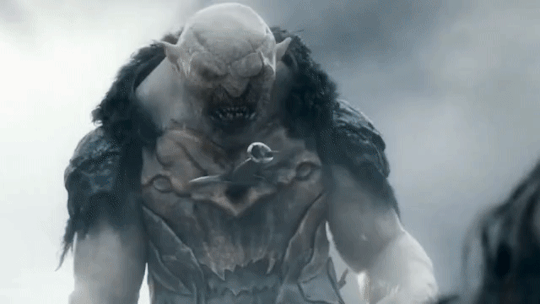

Kings Sword Returned
323 notes
·
View notes
Photo







tolkien week (2/2) 2022 | day 03. weapon
↳ orcrist
#the hobbit#thorin oakenshield#orcrist#richard armitage#thorin#tolkienweek#tolkienweek2022#hobbitedit#tolkienedit#razzyedits#thorinedit#orcrist my beloved
755 notes
·
View notes
Text
"Upon his tomb the Elvenking then laid Orcist, the elvish sword that had been taken from Thorin in captivity." (The Hobbit, Chapter 18 - The Return Journey)
Consider this gesture from Thranduil, honoring the deceased Thorin by giving up Orcrist to rest upon his tomb for eternity. Thorin had no legitimate claim to such a priceless Elvish heirloom, other than "finders keepers". Unlike in the movies, Thorin never even carried it into his final battle, so there is no sentimental value tying him to it.
Orcrist (as well as Glamdring) was the sword of King Turgon, High King of Gondolin, making Elrond (his great-grandson) its clear and rightful heir. However, the movie Desolation of Smaug also portrayed Legolas claiming the sword as one made by his kin, so perhaps Thranduil's descendants, through his wife's side of the family, has some claim to it as well (as I mentioned in a previous post). At the very least, it makes sense that a famous Elvish blade should remain in the hands of an Elf. Imagine how deadly Legolas would have been if he'd wielded that bad boy on the Pelennor Fields.
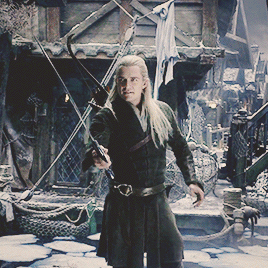
Arguments about claims aside, it is an understated testament to Thranduil's sense of honor and diplomacy that he chose to use Orcrist to honor a Dwarf King. Thorin had not been very respectful to him in return, and would never get the chance to return the favor. But it seemed to matter to Thranduil that he lay something truly valuable on Thorin's tomb as a symbol of friendship and peace, perhaps with the intention of ending the feud between their races once and for all.
So much for those accusations of the Elvenking being "weak for treasure".
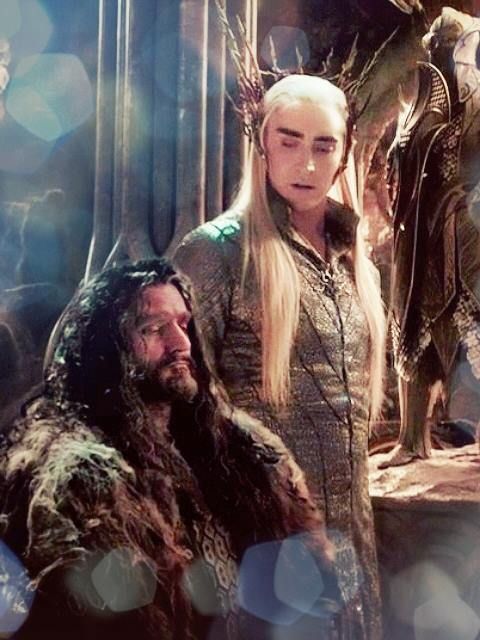
#thranduil oropherion#king of mirkwood#elrond#orcrist#thorin oakenshield#the hobbit#the hobbit quote#tolkien quote#legolas
161 notes
·
View notes
Text
So one detail that is really, really sad about both the Hobbit and Lord of the rings, that is there from day one always hoovering over the narrative, but is never really explained, is the sad story of Sting, Glamdring and to a lesser extent Orcrist.
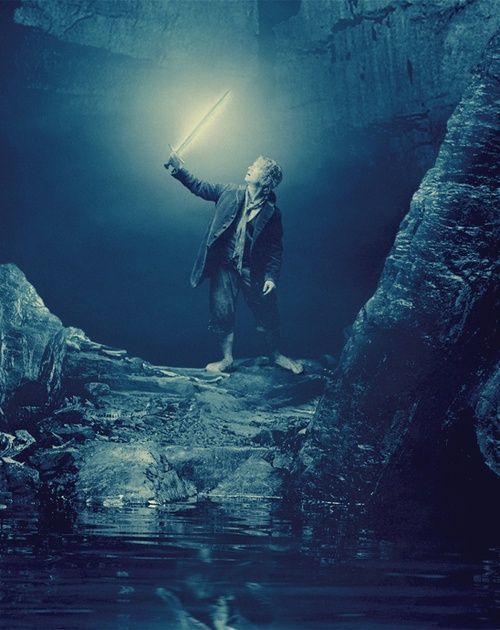
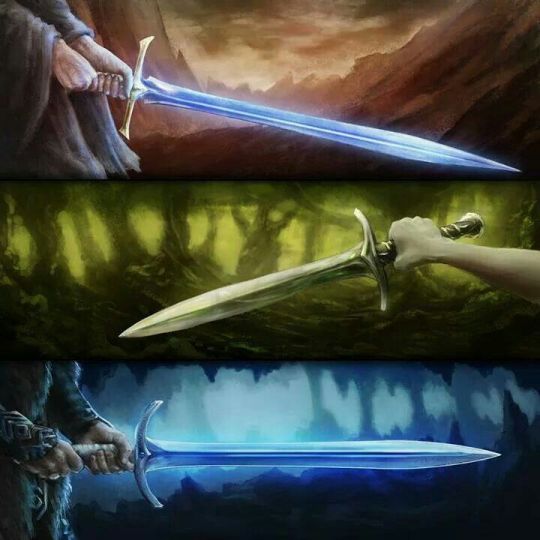
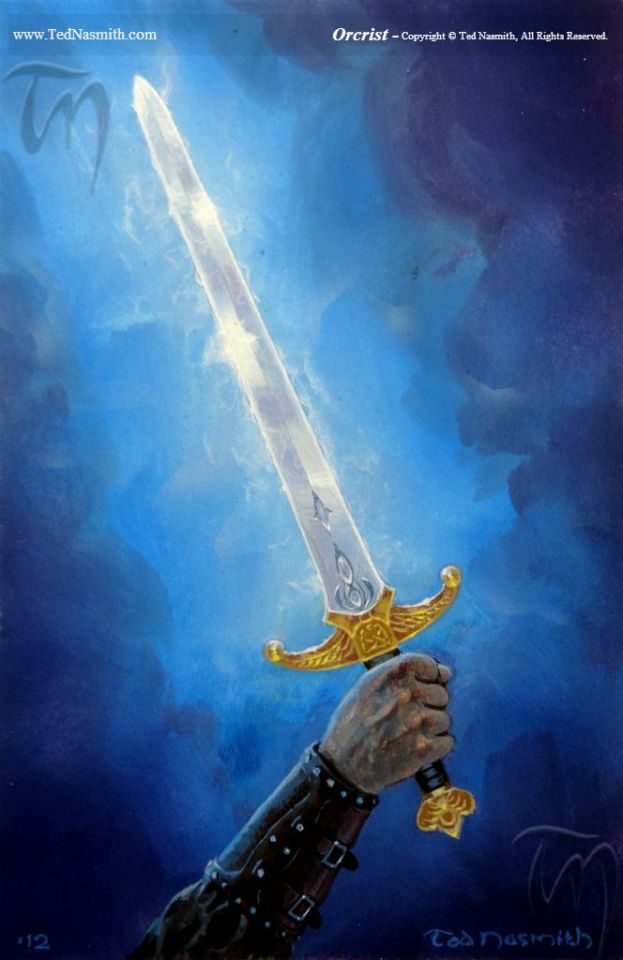
These weapons glow blue in the pressence of Orcs.
Its a detail that's never explained beyond the fact that it's because it's Elven weaponry from fallen Gondolin.
But we're never explained why only these out of all the elven made equipment in the franchise glows like this.

Clearly it was something unique to the Gondolinian smiths, and so you'd be forgiven for thinking on a first delving into the deeper legendarium, that it was snuffed out with the city itself, when Morgoth's forcea sacked it with Orcs, balrogs, dragons and early mechanical troop carriers.
A wonderous and in it's own way beautiful little bit of magic, lost to the world forever.
But no, that's not quite it.
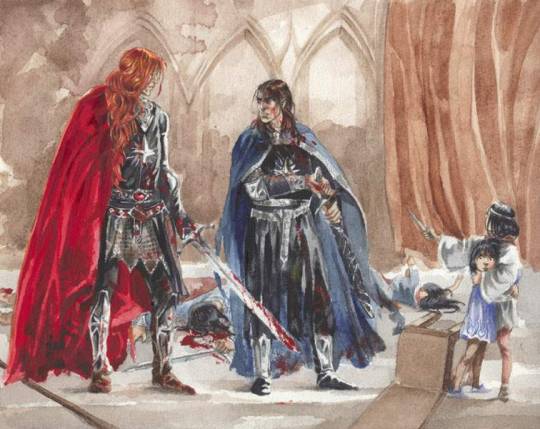
While it was the sack of Gondolin that killed most of it's people, there was still hope for some sort of recovery for it's people, the true treasure of fair Gondolin that truly mattered...
But that hope was snuffed out by the sons of Feanor, when they assaulted the havens where the survivors of this genocide and many others had gathered and wiped almost all of them out.
In thw end, if there was any amongst them that knew the secret for how to make the blue glowing steel, it died here, where this attrocity took place and Elf killed elf on large scale for the third time, for the pettiest and most selfish of reasons.
Leaving Sting, Glamdring and Orcrist and those few other weapons from the city to survive as the last memorials to a dead and gone culture, the last children of a culture that Feanor's brood snuffed out in a slaughter.
#tolkien's legendarium#sting#glamdring#orcrist#the hobbit#lord of the rings#the silmarillion#swords#gondolin#the sack of gondolin#the third kinslaying#sons of feanor
12 notes
·
View notes
Text
𝐎𝐑𝐂𝐑𝐈𝐒𝐓: The Goblin Cleaver; p.4
The Orcs had called it the Blade Biter. It was crafted by the elves in the First Age, making it not only a valuable weapon, but a feared one amongst their enemies. Like it's mate Glamdring and Sting; Orcrist glows blue to warn its bearer of the presence of Orcs.

19 notes
·
View notes
Text
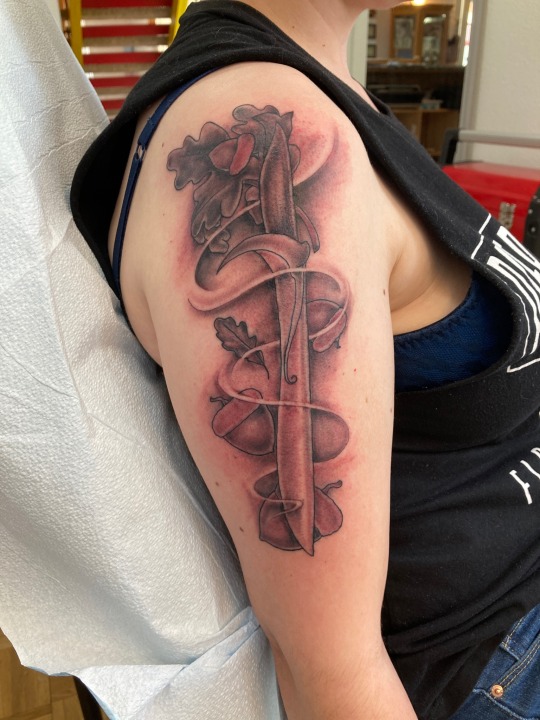
Just finished getting my Orcrist tattoo, with subtle Bagginshield reference in there too 🖤
32 notes
·
View notes
Photo

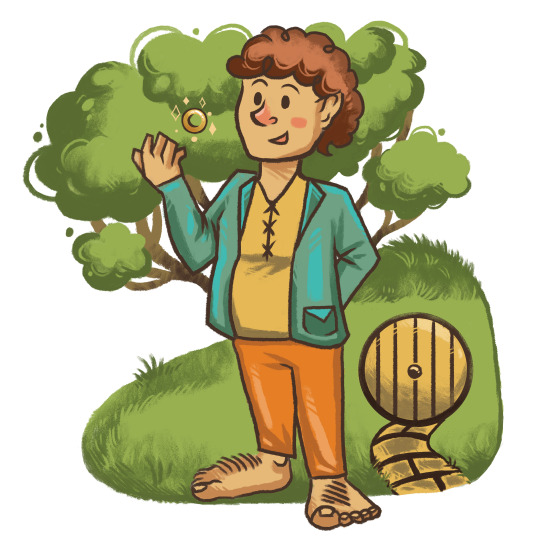

A super awesome work project that allowed me to illustrate some characters from Middle Earth.(How is my life real.) Thorin was not a part of this project (rude), but is my favourite and therefore an obligatory addition.
I didn’t illustrate Bilbo and Smaug as their movie counterparts, but as far as I’m concerned, Richard Armitage IS Thorin and there is no other way I could illustrate him. I also approached each of these characters with a slightly different take on my standard illustration style (Bilbo and Smaug are waaaay more simplified which was a challenge! Thorin is closer to how I would normally illustrate if I had infinite hours at my disposal)
Also I’m an expert in Gondolinic runes and I can assure you that’s totally what the cirth on Orcrist says. (The other side says “Ecthelion wuz here lolololol”. In case you were wondering.)
#the hobbt#lotr#bilbo#bilbo baggins#fanart#middle earth#thorin#Thorin Oakenshield#orcrist#smaug#illustration#richard armitage#tolkien#the shire#the lonely mountain
46 notes
·
View notes
Text
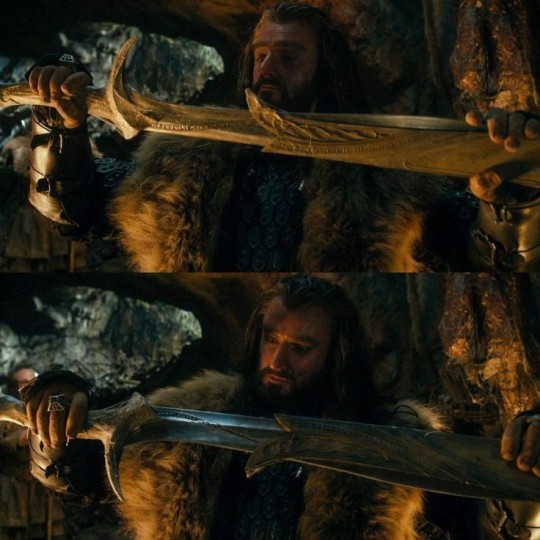
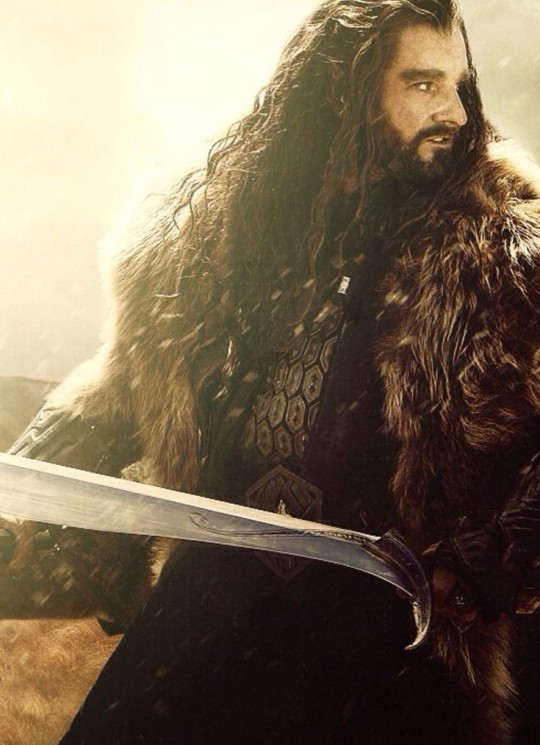
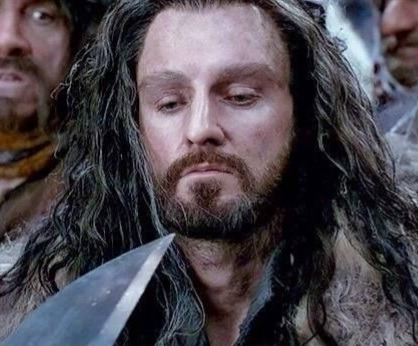


Thorin + Orcrist
#thorin oakenshield#my gorgeous husband#thorin#the hobbit#orcrist#the hobbit movies#richard armitage
94 notes
·
View notes
Text

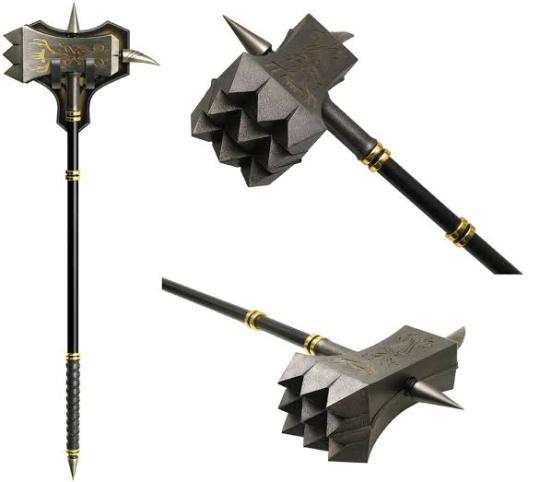

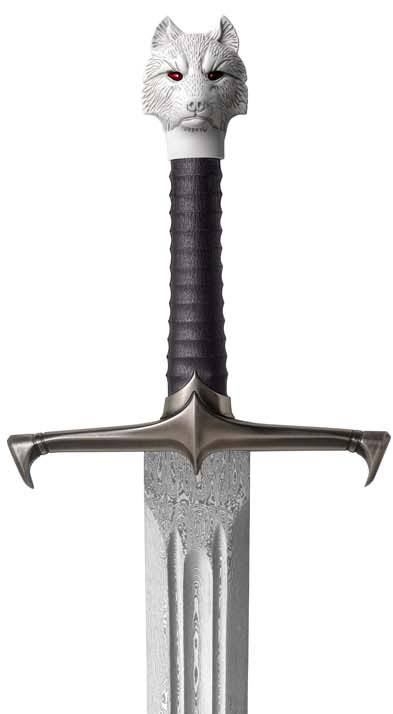


Among the projects I'd love to make in the future, I'm not sure of which I'd like to make first. Maybe the bronze age sword, just to take a breath from the fantasy weapons.
Bobert Baratheon's Warhammer is a must, I've already done the cad model to base it off and it seems like it will be fun and painful to make.
Also, check out some of the projects that I've actually made.
#wooden toys#woodworking#wooden sword#lotr#Glamdring#anaklusmos#orcrist#longclaw#robert baratheon#bobby b's mace#future projects#solidworks
3 notes
·
View notes
Text

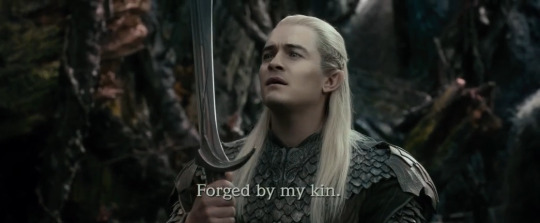
I cannot, for the LIFE OF ME figure out what they were going for with this scene.
I mean, anybody reasonably familiar with the Hobbit or anything else written by Tolkien would know Orcrist was very much not forged by Legolas’ kin and that he’d have absolutely no reason to claim that (especially not in Elvish which the Dwarves can’t understand - if he was saying that for their benefit and using ‘my kin’ as shorthand for ‘other elves’ it might make some vague amount of sense but he’s just thinking to himself, and there’s no way in hell he privately identifies with the Noldor enough that he’d think of them like that) but that’s not the weirdest thing about this.
In the ACTUAL Elvish that he is ACTUALLY speaking in this scene, he’s saying:
“This sword was made in Gondolin. Forged by the Noldor.” (source)
Which is actually correct. Why oh why would they go to the trouble of writing a piece of Elvish dialogue saying one thing and saying exactly the opposite thing in the subs?
If it was about the copyright issues of not being allowed to reference the Silm but they still wanted to have the actual facts as a little easter egg, couldn’t they tweak the subtitles so they’d fit better? Like saying “this is a blade from one of the old Elven kingdoms, forged by the High Elves?” Hell! It can’t be that, the LotR movies had Galariel use the word ‘Noldorin’ to describe the daggers she gives Merry and Pippin, AND the first Hobbit movie had Elrond spelling it out for us by literally saying: “This is Orcrist, the Goblin-cleaver. A famous blade... forged by the High Elves of the West, my kin.(...) And this is Glamdring (...) Sword of the King of Gondolin. These were made for the Goblin Wars of the First Age” SO WHAT EXACTLY IS THE ISSUE HERE?!
If they wanted to have him say exactly what he’s saying in the subs, couldn’t they have him actually say that instead of distracting me with the word ‘Gondolin’? Is it that they recorded the dialogue to echo Elrond’s words in AUJ, and then thought “hmmm, casual viewers won’t get that even though we referenced that in the first movie” and so they subbed it with the exact opposite of what he’s saying?? To also echo what Elrond said except this time it has the unfortunate consequence of implying that Legolas and Elrond are kin which would be bound to confuse casual viewers even more?!
Which version am I supposed to go with now? Is Legolas merely confused about Dwarves carrying a First Age Noldorin weapon - which is what his real dialogue and initial reaction tell us - or is he offended that Dwarves apparently stole something that belonged to ‘his kin’ - which is what the subtitles establish and what the movie goes with?? Why is the movie operating on two separate and contradicting levels of reality?!
I mean, his reference to Gondolin makes his bitchy attitude even more unwarranted and pointless than it already was, because if Thorin had stopped being a cryptic asshole for all of two seconds he could have just said ‘Lord Elrond gave this to me’ (truthful + Elrond is the kind of guy you absolutely namedrop if you want an Elf to listen to you) instead of ‘it was given to me’ (needlessly vague, antagonizing and dumb) and Legolas would have gone ‘Elrond is pretty significantly connected to Gondolin, what with his grandparents being from there, and a Dwarf probably wouldn’t think to use that info to convince me, so it’s probably not a lie.’
Why do I get punished for knowing what they’re talking about?
#the hobbit#hobbit movies#meta#ish#more like me ranting#hobbit movies salt#thorin#legolas#gondolin#orcrist
115 notes
·
View notes
Text



Valiant Armoury and Kult of Athena made it to the Forbes list of best gifts for Tolkien lovers. To celebrate, we're posting a special preorder for the coveted Valiant Armoury Short Leaf Blade Sword with Green or Blue Scabbard. Pre-order by the 27th and we will deliver by the end of February!
What we love about this epic sword:
comes from premium quality Craftsman line
made in the USA
companion scabbard masterfully crafted from wood and bound in green or blue-hued leather
This preorder special will close on 12/27. Quantity is extremely limited (only 20 of each are in production for us). Tap one of the links to stake your claim!
Green Scabbard
Blue Scabbard
For the LOTR fans, check out the article HERE.
#Kult of Athena#KultOfAthena#Valiant Armoury#Forbes#Forbes List#LOTR#Lord of the Rings#JRR Tolkien#The Hobbit#The Fellowship of the Ring#The Two Towers#The Return of the King#Sting#Anduril#Orcrist#Glamdring#Hadhafang#sword#swords#Holiday Gifts#Holiday Gift Guide
10 notes
·
View notes
Text
You know, in hindsight, the rediscovery of Glamdring and Orcrist is probably one of the most hilarious moments in the whole legendarium when you consider the context.
I can only imagine how physically painful it was for noted loremaster Elrond to discover that these two legendary blades, lost for six thousand years and how, were found entirely by accident - in a cave about fifty miles west of his house, where they had likely been for hundreds if not thousands of years, and probably within reasonable day-trip range for Elven horses.
I can only assume that Tolkien left the ensuing scream of anguished nerd-rage, that would no doubt have echoed through the hills and glades of Rivendell, out of The Hobbit to avoid spoiling the mood
6 notes
·
View notes
Photo

Orcrist and Thorin...it was an unusually fine blade.
4 notes
·
View notes